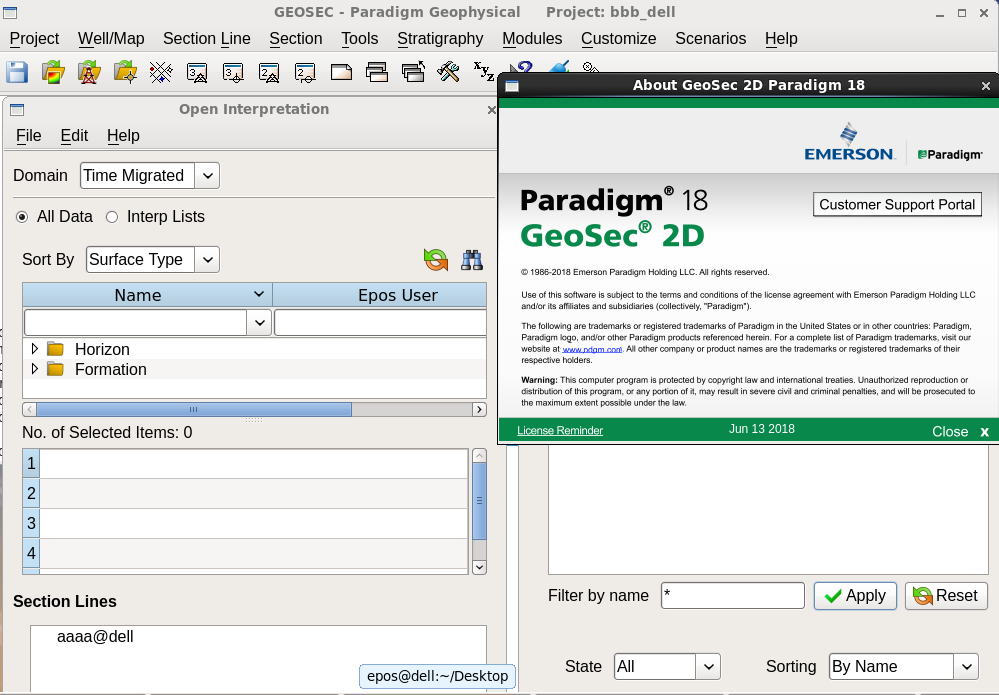GeoSec
Fast, accurate understanding of structural history.
The Paradigm® GeoSec® multi-faceted structural geology tool provides valuable insight about the reservoir geometry and structural history of potential prospects.
With GeoSec, geoscientists and geologists can quickly incorporate structural geological analysis into exploration and production workflows. The resulting analysis assists in risk minimization and enhances the potential for locating new prospective targets.
Available through the Paradigm® SeisEarth® multi-interpretation evaluation suite, GeoSec increases understanding of tectonic behavior and structural age, while revealing flaws in the consistency of data interpretation.
GeoSec core and expanded features include:
- Integration of 3D well data with 2D projection module
- Incorporation of log curve data in structural analysis
- 2D strain analysis and stress determination
- Link to SeisEarth Section and integration with the Epos® database
- Multi-Z values for formation boundaries
- Flexible input/output, 2D/3D data exchange
- Standardized ergonomic user interface with dynamic contextual help
- Animation, movie player and snapshots
- Qt graphics enabling fast, high-quality display of fonts and graphics
- Robust interoperability for seamless access to third-party remote databases
RICH ANALYSIS OF COMPLEX REGIMES
The GeoSec tool assists in the analysis of complex tectonic regimes with a rich choice of structural analysis and restoration algorithms. As a result, geophysicists and geologists can increase their understanding of the tectonic behavior and structural age of prospects, while revealing flaws in the consistency of data interpretation.
- Compaction, decompaction, and isostatic analysisВ are used to locate the original thickness and depth of the lithological units. This analysis is necessary to estimate the amount of original porosity and depositional environment present before tectonism.
- Structural modeling and fault geometry analysisВ include algorithms for Fault Bend Fold, Fault Slip Fold, Fault Prediction, Fault Parallel Flow, Trishear Fold and Fault Propagation. These are used to generate interpretations where the resolution of the seismic data is poor or where there are few control points to generate a good model.
- The Flexural SlipВ is an algorithm that models the deformation mechanism present in many compressional tectonic regimes.
- The Vertical/Oblique SlipВ algorithm models a deformation mechanism present in many extensional tectonic regimes.
- Projection algorithmsВ for well dipmeter and borehole information calculate the apparent strike and dip along different azimuths of the cross-section. The interactive, dip-guided models deliver a more exact geological representation of the subsurface.
В ULTI-Z VALUES FOR REALISTIC GEOLOGICAL MODELS
Multi-Z values for formation boundaries are a necessity in compressional tectonic regimes in which lithological units frequently overlap. GeoSec solves this problem by supporting multiple occurrences of the same horizon at any x-y location.
Using planimeter tools and automated polygonal calculation, GeoSec also enables stratigraphically linked geological fill patterns and solid shading. This provides an accurate and comprehensive picture of the subsurface, even in very complex environments such as salt tectonic regimes with domes and intrusions.

